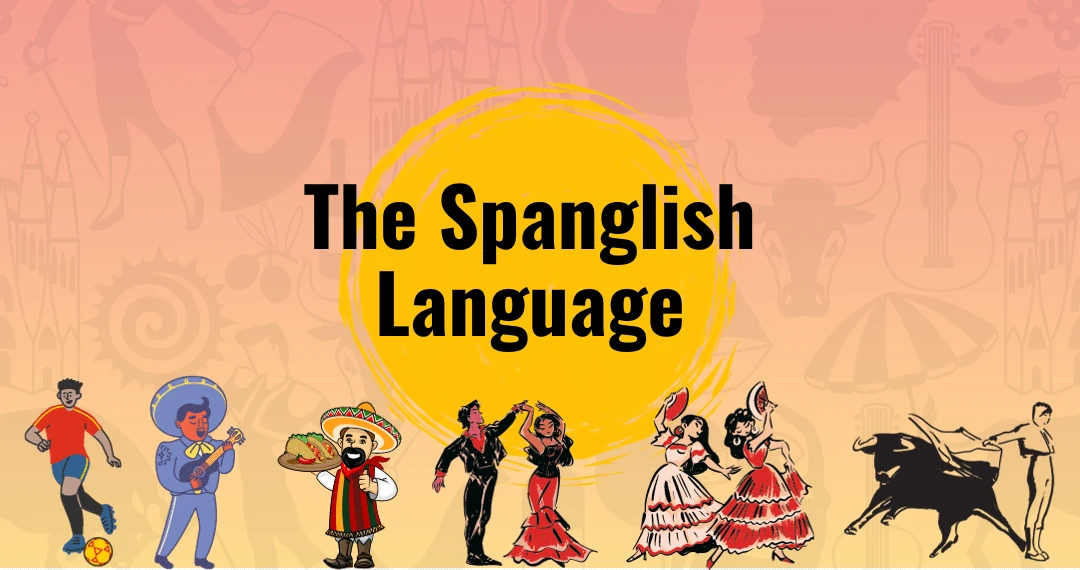Spanglish is a phenomenon that showcases how the coexistence of two languages in the same environment can lead to the creation of a “new bridge” language.
As its name suggests, Spanglish is a fusion of English and Spanish. Many see it as a celebration of cultural diversity in multilingual societies.
However, is Spanglish a real language? A dialect or fiction?
In the following blog, we’ll delve into the origins, history, and fascinating evolution of Spanglish, exploring the common expressions and their use in the communities that embrace it.
Keep reading to find out more about the significance and the role of Spanglish in shaping the communication and identity of multilingual communities.
Are you Looking for professional translation services?
Milestone helps you accurately translate your documents, websites, apps, videos, and more in 70+ languages.
What is the Spanglish language?
Spanglish is a hybrid language that has emerged as a result of blending Spanish and English.
According to experts, it has emerged in bilingual communities where individuals simultaneously integrate elements from both English and Spanish into their speech, thus creating a unique linguistic fusion. Many refer to it as Spanglish.
In general, Spanglish incorporates vocabulary, phrases, and grammatical structures from both languages.
For instance, one can notice elements from both languages within the same conversation or even the same sentence. Even single words often contain elements from both languages (see the image below).
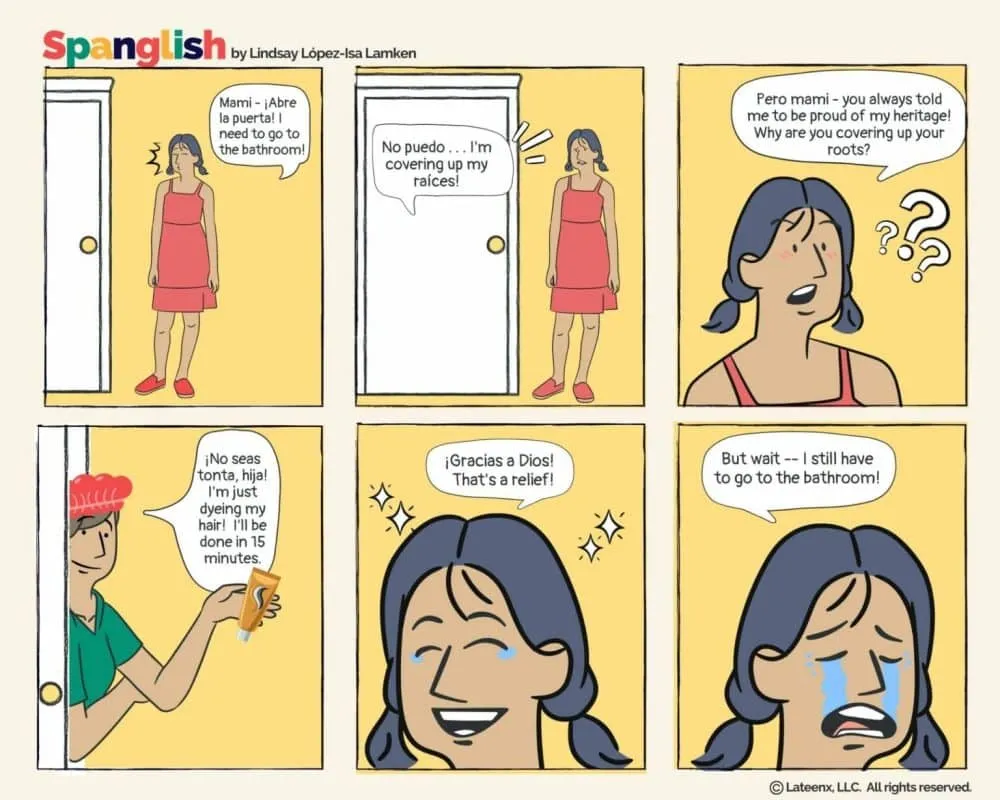
In simpler words, Spanglish can be seen as a dynamic linguistic phenomenon that reflects the cultural, social, and linguistic interconnectedness of bilingual communities. Indeed, Spanglish showcases the capability of individuals in bilingual communities to navigate effortlessly between the languages spoken in their environment.
Spanglish is not a standardized or formalized language. Rather it is a constantly changing and informal mode of communication.
Also read: 10 Fascinating Facts About Spanish
Origin, history, and evolution of Spanglish
The origin, history, and evolution of Spanglish can be traced back to the historical and cultural interactions between Spanish-speaking and English-speaking communities.
The term “Spanglish” first appeared in the United States during the late 1940s.
The phenomenon of language blending, however, has resulted from centuries-long contact between Spanish and English speakers, particularly in regions where the local language is English and where large Hispanic populations reside.
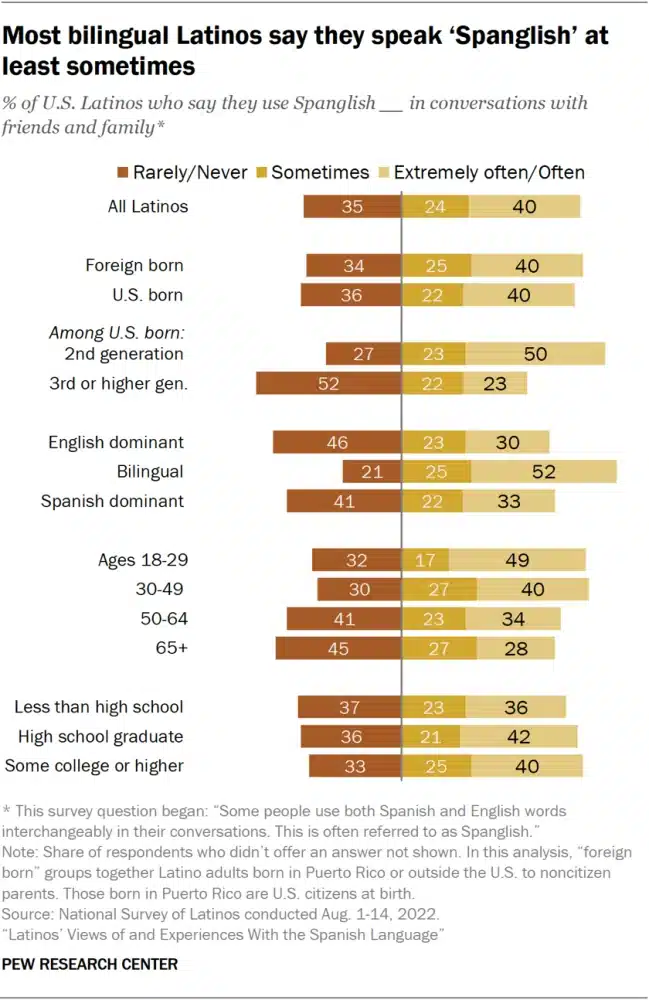
Also read: Portuguese vs Spanish – Is Spanish similar to Portuguese?
Over time, the coexistence of these communities, especially in urban centers and border regions where bilingualism is very common, led to the continuous expansion of Spanglish.
As a language, Spanglish has evolved organically, influenced by factors such as immigration, globalization, and cultural exchange. Indeed, its dynamic nature reflects the adaptability of language to the social contexts in which it is used.
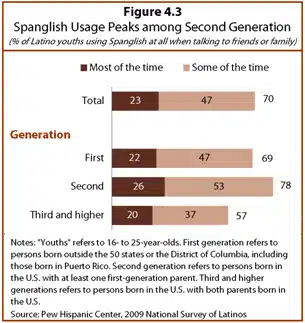
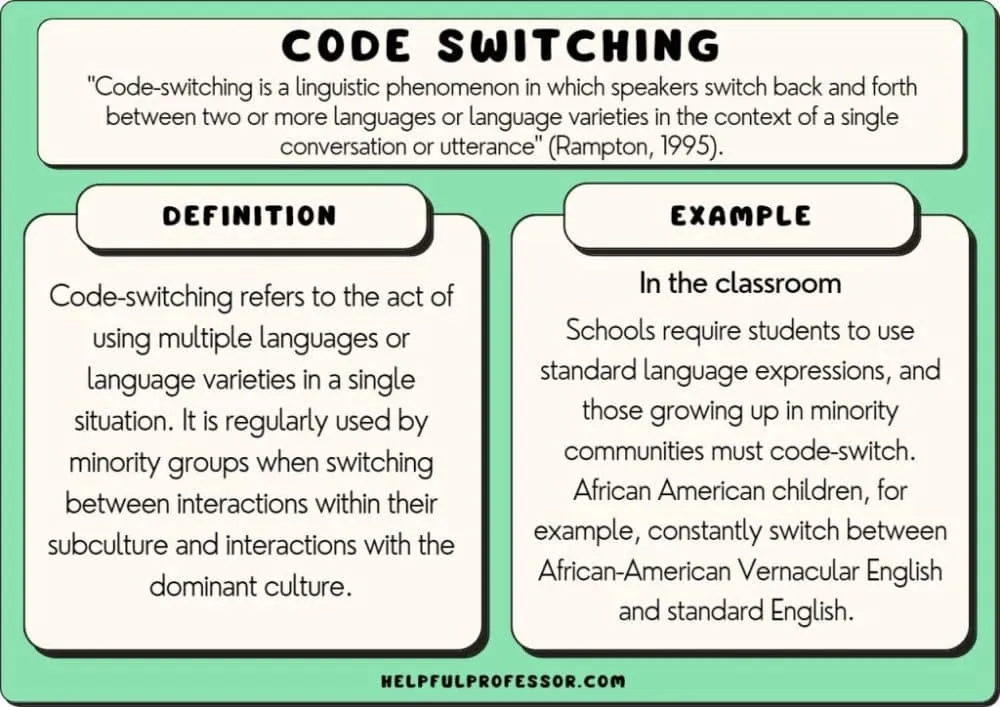
While some experts view Spanglish as a linguistic anomaly or a form of code-switching, others see it as a vibrant expression of cultural identity in bilingual communities.
Also read: The Prevalence of the Spanish Language Within the US
Where is Spanglish spoken and the number of Spanglish speakers?
Spanglish is primarily spoken in regions where there is a significant overlap of Spanish and English speakers.
For example, in the United States, there are certain urban areas with diverse Hispanic populations.
Cities along the U.S.-Mexico border, in particular, such as San Diego, El Paso, and Miami, as well as metropolises like New York and Los Angeles, are among the places where Spanglish can be heard frequently.
While it is challenging to determine the exact number of Spanglish speakers, about 40 million individuals in these bilingual communities engage in Spanglish conversation as a part of their daily communication. Most Spanglish speakers are raised by their Spanish-speaking parents in English-speaking environments.

The prevalence of Spanglish has grown with increasing cultural exchange and bilingualism. it’s important to note that Spanglish is a colloquial and informal mode of communication, and there is no standardized form or official count of speakers, but rather an estimation.
Also read: Professional document translation services
Common Spanglish words and phrases
We have compiled a list of some of the most common Spanglish expressions and phrases:
Carro: Blending the English word “car” with the Spanish pronunciation, “carro” is often used instead of the Spanish word “coche” for an automobile.
Troca: Another term for a truck or SUV. It’s derived from the English word “truck.”
Parquear: This word means “park a car” and combines the English verb “park” with the Spanish verb ending.
Lonche: A Spanglish term for lunch, derived from the English word “lunch” with the Spanish pronunciation.
Bregar: The word stems from the English “to bear.” It is used in Spanglish to convey the idea of dealing with challenges or managing difficult tasks.
Janguear: This word is derived from the English word “hangout” and is used to describe going out or spending time with friends.
Wachear: This is a Spanglish verb meaning to watch or look, stemming from the English “watch.”
Chatear: Blending the English word “chat” with the Spanish verb ending, this word means to chat or engage in conversation.
Emailar: The word combines the English “email” with the Spanish verb ending, and it is used as a verb meaning to send an email.
Hamburger: The word is spelled exactly like in English, but it is pronounced in a more Spanish manner. It refers to a hamburger.
Spanglish is informal and lacks standardization. What’s more, the use of Spanglish is highly context-dependent and can be influenced by the specific linguistic preferences of the speakers. This means that the vocabulary and expressions may vary among different communities and individuals.
Also read: [TOP 5] English Speaking Countries in Africa
Are you looking for professionals translation services?
Milestone helps you accurately translate your documents, websites, apps, videos, and more in 70+ languages.
Current usage of Spanglish and future perspectives
Currently, Spanglish continues to be actively used in various bilingual communities, especially in the United States and regions where Spanish and English are used daily side by side.
It is mostly used in everyday conversations, reflecting the cultural and linguistic adaptability of these communities. Spanglish is often employed as a natural means of communication among individuals who utilize both languages in their daily lives.

The future perspectives of Spanglish are intriguing. While some view it as a temporary linguistic phenomenon resulting from the coexistence of Spanish and English speakers, others see it as an evolving expression of cultural identity.
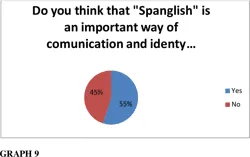
The continued growth of bilingualism, globalization, and cultural exchange may contribute to the sustained use and even further evolution of Spanglish.
In media, entertainment, and advertising, we may continue to see the incorporation of Spanglish elements as a way to connect with and represent diverse, multilingual audiences.
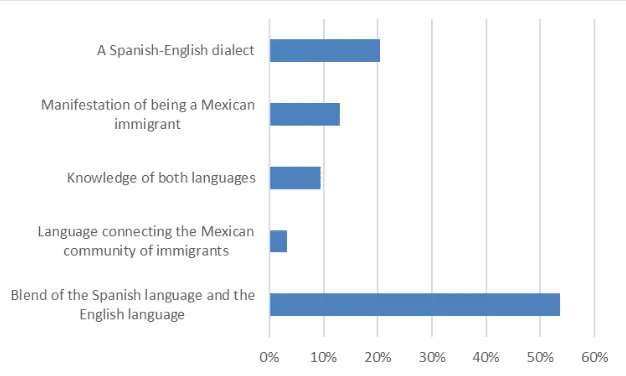
Description: The meaning of Spanglish for Spanglish speakers
Also read: Languages Spoken In Texas & It’s Bilingual Education System
Moreover, the acceptance and recognition of Spanglish as a legitimate, standardized language may evolve. It could become an integral part of the linguistic landscape of the US, for instance, shaping the way people living in multicultural and multilingual societies express themselves.
However, the future trajectory of Spanglish will likely depend on various factors, including societal attitudes, migration, local and global policy-making strategies, education policies, and the evolving dynamics of bilingual communities.
As for the future perspectives of other bridge languages like Hinglish (Hindi-English blend), Konglish (Korean-English blend), and Chinglish (Chinese-English blend), it appears promising as well. With the emergence of new multicultural and cosmopolitan centres around the world, bridge languages can serve as a means of communication among their linguistically and culturally diverse communities.
As globalization continues to expand, these bridge languages are likely to persist and further spread, becoming the driving force of cross-cultural understanding. This, in turn, would undoubtedly contribute to a more interconnected world.
Nevertheless, the extent of their influence may vary depending on sociocultural factors, similar to Spanglish.
Also read: An Introduction to Universal Spanish
In conclusion…
Spanglish is a fascinating mixture of English and Spanish and is often referred to as a “bridge” or a “fusion” language.
In recent years, it has become an intrinsic part of the linguistic landscape in countries, such as the US where huge Hispanic populations reside. Through the years, Spanglish has become an informal means of communication for millions of bilinguals.
While Spanglish is not standardized and, according to some experts, is not even considered a language, it is undeniable that Spanglish is widely spoken. Hence, it would be no surprise if one day Spanglish was officially recognized as a language.
But until then, we can admire Spanglish as a bridge between languages, cultures, and people.
Are You Looking for professionals translation services?
Milestone helps you accurately translate your documents, websites, apps, videos, and more in 70+ languages.

